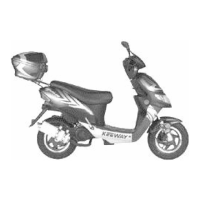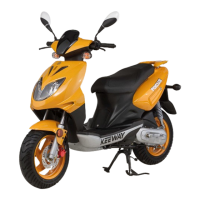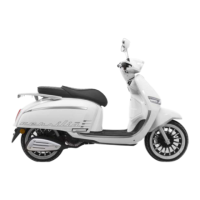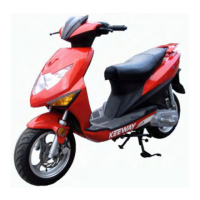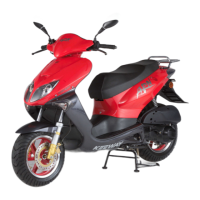THANK YOU FOR CHOOSING KEEWAY
MOTORCYCLES
This manual has been updated, yet because of Keeway's constant
efforts to further improve performance, you may find some differences
between your motorcycle and this manual, therefore if you have any
questions or comments please contact your local Keeway Service
Center
For any repairs not mentioned in this manual or accessories required
please contact your local Keeway Service Center
Use only genuine spare parts and accessories manufactured by
Keeway
.
The meanings of some signs in the manual are as follows:
Indicates potential hazard that could result in injury or death
Indicates potential hazard that could result in vehicle damage
Indicates special information to make maintenance easier or
instructions clear
Design and production by Keeway Motor
Tel. 00 36 26 500 005 Fax. 00 36 26 312 034
e-mail.info@keeway.hu
visit our web page:www.keeway.hu
www.keewaymotor.com
DRIVE SAFELY
This manual should be considered as an integral part of your
motorcycle and should always remain with it even at
resale
This chapter indicates some rules you should follow while driving
.
It is necessary to fulfill all the requirements provided by law
(license, plates, registration etc.)
. It is recommended that you drive your Vehicle through low transit
areas and at low speeds until you are confident
about handling heavy traffic
.
Never lend your motorcycle to a learner
since most accidents occur
because of the lack of experience of the driver
.
Do not drive under the influence of alcohol, drugs or medical
treatment that can cause drowsiness
.
Respect norms of transit and signs
.
Make sure to wear helmet, gloves and protective clothing
.
Dfivershould not get distracted (by smoking, drinking, eating,
reading, etc.)
. Check vehicle periodically (oil, fuel, etc.)
. The motorcycle is designed to hold one passenger
Check your motorcycle before riding.
LUGGAGE
.
Luggage must be fixed'in place firmly
.
Loading affects performance and steadiness of handling
.
Luggage must be fixed with rubber strip or rope
.
Do not carry more luggage than the permissible weights shown
below:
